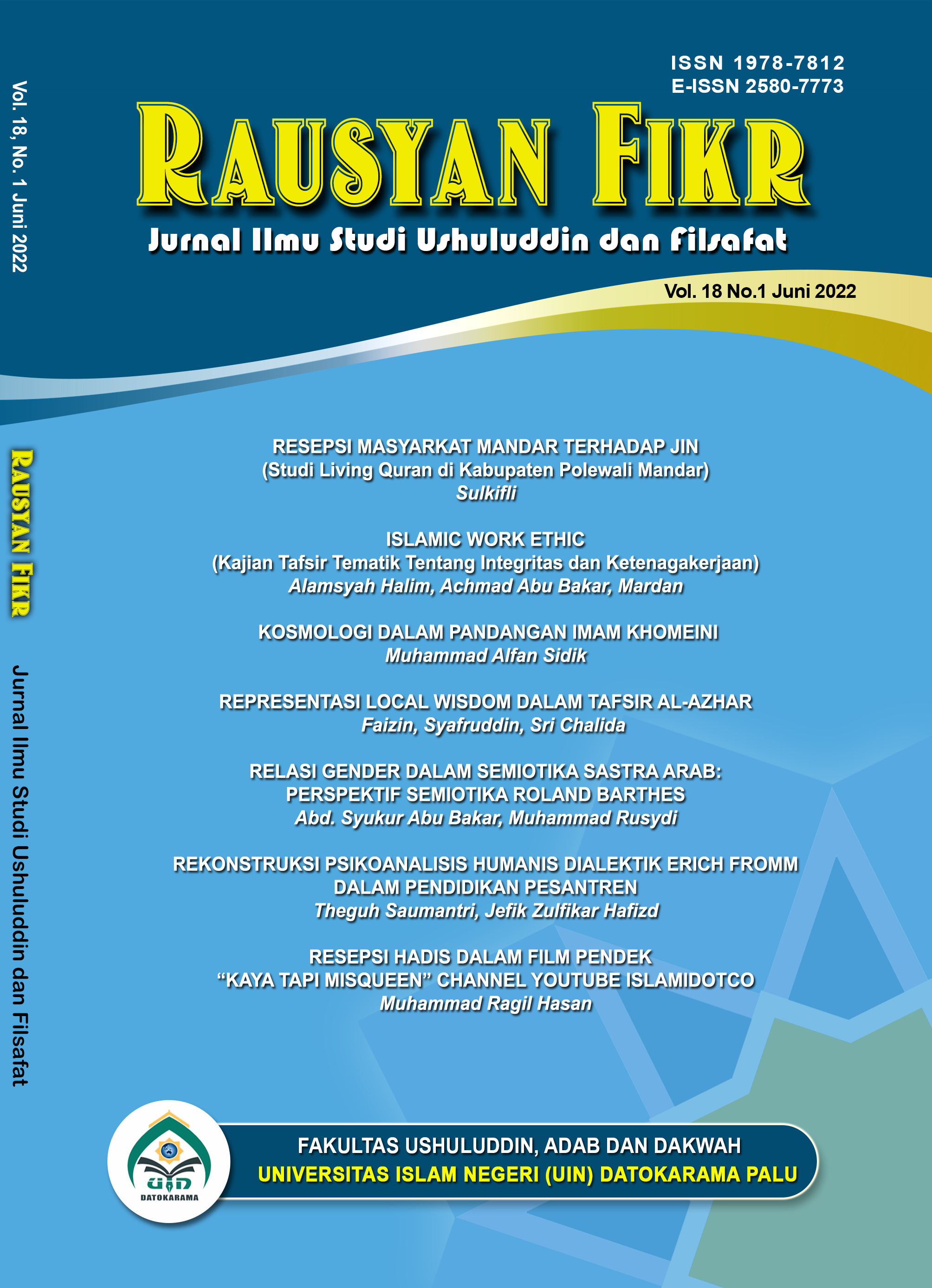RELASI GENDER DALAM SEMIOTIKA SASTRA ARAB: PERSPEKTIF SEMIOTIKA ROLAND BARTHES
Abstract
This article focuses on revealing how gender ralation are recorded in the semiotics of Arabic literature through Roland Barthes' semiotics as its perspective. Roland Barthes is a thinker who has great attention to the study of semiotics, including in this context, by seeing a text as a sign system. The constructive relationship that is built between the sign, the signifier, and the signified as described by Roland Barthes in his semiotic thinking requires the reader to be active in dialectic with writers who write literary works so that the denotative meaning of an Arabic literary work can metamorphose into a connotative meaning. In its practical framework, Arabic literary works in various forms such as poetry, prose, and others are full of depictions of women and their social roles that must be approached with semiotic studies so that moral messages are found oriented to gender equality for men and women. In this process, a reader should not be fixated on the denotative meaning of a literary text that is very full of ethical and aesthetic values, but what must be done is that the reader must be active in transforming the denotative meaning into a connotative meaning that continues to have a dialectic with the surrounding cultural context or with the context culture of writers.References
Ahmad al-Syayib, Ushul al-Naqd al-Adabi, Kairo: Maktabah al-Nahdlah al-Mishriyah, 1994.
Culler, Jonathan, Seri Pengantar Singkat: Barthens, Yogyakarta: Penerbit Jendela, 2003.
Derrida, Jacques, Positions, Chicago: University of Chicago Press, 1972.
Eagleton, Terry, Teori Sastra: Sebuah Pengantar Komprehensif, Yogyakarta: Jalasutra, 1985.
Fananie, Zainuddin, Telaah Sastra, Surakarta: Muhammadiyah University Press, 2001.
Fiske, John, Introduction to Communication Studies, London dan New York: Routledge, 1990.
Foucault, Michael, Arkeologi Pengetahuan, Yogyakarta: IRCiSoD, 2012.
al-Iskandari, Ahmad dan Musthafa Inani, al-Wasith fi al-Adab al-Arabi wa Tarikhihi, Kairo: Dar al-Ma’arif, 1992.
Mubarak, Husni, Mitologisasi Bahasa Agama: Analisis Kritis dari Semiologi Roland Barthes, Jakarta: UIN Syarif Hidayatullah, 2007.
Muzakki, Akhmad, Pengantar Teori Sastra Arab, Malang: UIN-Maliki Press, 2018.
Nurchalis, Perempuan dalam Persepsi Sastrawan Arab Mahjar, Jurnal Adabiya Vol. 15 No. 29 Tahun 2013.
NURSIDA, Ida. Isu Gender dan Sastra Feminis dalam Karya Sastra Arab; Kajian Atas Novel Aulad Haratina karya Najib Mahfudz. Alfaz (Arabic Literatures for Academic Zealots), [S.l.], v. 3, n. 1, p. 1-35, June 2015. ISSN 2620-5351.
al-Sabki, Amal Kamil Bayumi, al-Harakah al-Nisaiyyah fi Misr, Mesir: al-Haiah al-Misriyah al-Ammah, 1986.
Sani, Abdullah Raja, Banat Riyadh, Beirut: Dar al-Saqi, 2006.
Sobur, Alex, Analisis Teks Media, Bandung: Remaja Rosdakarya, 2015.
Sudarto, Anderson Daniel dkk., Analisis Semiotika Film “Alangkah Lucunya Negeri Ini”, Jurnal Acta Diurna Vol. IV No.1 Tahun 2015.
Yasraf Aming Piliang, “Semiotika Teks: Sebuah Pendekatan Analisis Teks, Mediator, Vol. 5, no. 2, 2004, 189-198.
















